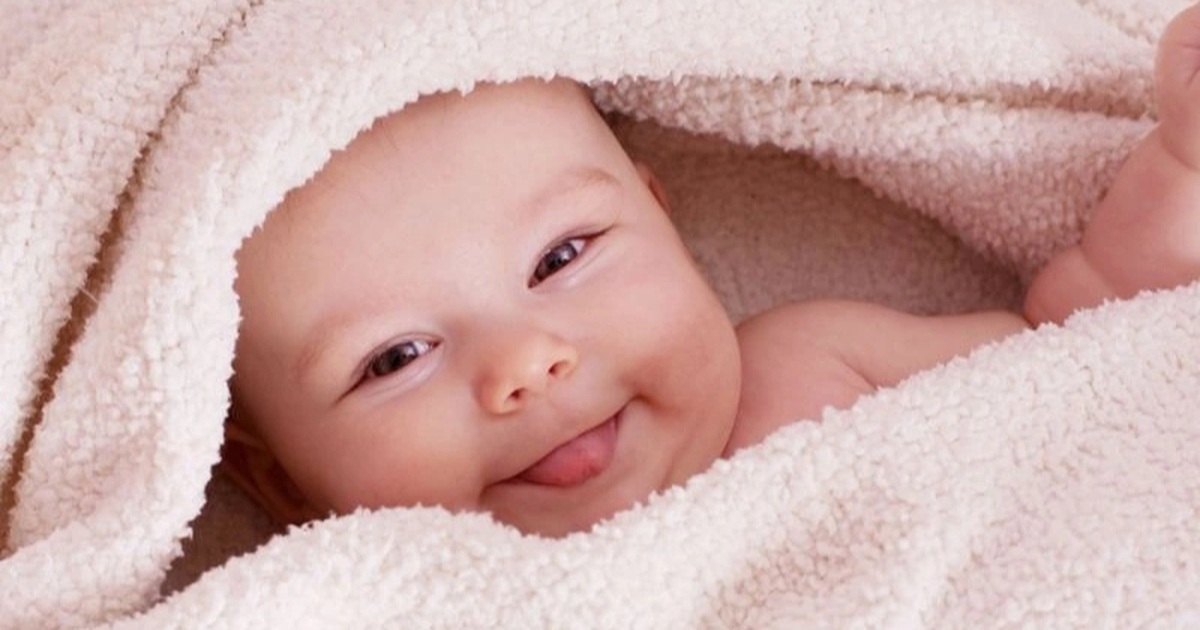Many parents are often surprised to see their newborn babies exhibit natural reflexes, mistaking them for “tricks” or conscious actions.
In reality, these are innate survival reflexes, controlled by the nervous system from birth, and will gradually disappear after the first few months of life.
Pediatric experts recommend taking advantage of this brief period to interact with infants, not only to foster bonding but also to help babies develop their senses, cognition, and ability to respond to the outside world.
Babinski Reflex
The Babinski reflex appears when the sole of a baby’s foot is gently stroked from the heel upwards, causing the toes to automatically fan out (Photo: Getty).
One of the most common reflexes in newborns is the Babinski reflex.
When a parent gently strokes the sole of the baby’s foot from the heel upwards, the foot will automatically open or the toes may curl up and spread wide.
This is a normal reflex in infants during the first few months of life and typically disappears by around 12 months of age.
A study published in the Journal of Neurology noted that the Babinski reflex is an important indicator of normal central nervous system development in newborns.
Galant Reflex
The Galant reflex occurs when a baby is gently stroked along one side of the spine, causing the body to curve towards the stimulation (Photo: Getty).
The Galant reflex also often fascinates many parents.
When a parent uses a finger to stroke along one side of the baby’s spine, the baby will automatically curve their body towards the side being touched. This reflex reflects the initial connection between the skin and the nervous system.
According to a study by the American Academy of Pediatrics, the Galant reflex is linked to a baby’s early motor development, such as rolling and crawling skills.
Rooting Reflex
The rooting reflex appears when a baby’s cheek or corner of the mouth is gently touched, causing the baby’s head to turn towards the stimulation (Photo: Getty).
The rooting reflex helps newborns locate a source of milk.
When a parent gently touches the baby’s cheek or the corner of their mouth, the baby will turn their head in that direction and open their mouth as if searching. This reflex is a survival instinct that helps the baby breastfeed more easily.
Research by the U.S. National Institutes of Health (NIH) indicates that the rooting reflex is most sensitive during the first 4 weeks of life and typically fades after 3-4 months.
“Calming Down” Reflex
Gently stroking between the eyebrows helps babies relax and fall asleep easily (Photo: Getty).
A behavior often mistaken for randomness but is actually a natural reflex in children is the expression of sleepiness.
When a child yawns, their eyes gradually close – a signal that the central nervous system is directing the body to enter a resting state. Gently stroking a finger on the area between the eyebrows creates a soothing sensation and stimulates the parasympathetic nervous system, thereby helping the child fall asleep more easily.
This technique is used by many sensory neural therapy specialists in infant care.
Most of these primitive reflexes will disappear after about 3-6 months of life as the baby’s brain develops and gains better control over voluntary movements.
Playing and stimulating these reflexes not only helps parents bond with their child but also contributes to the child’s comprehensive development during early life.


